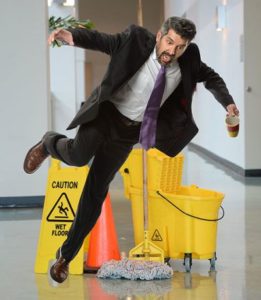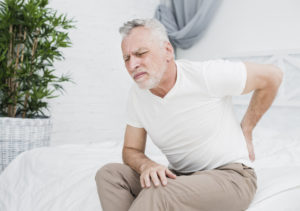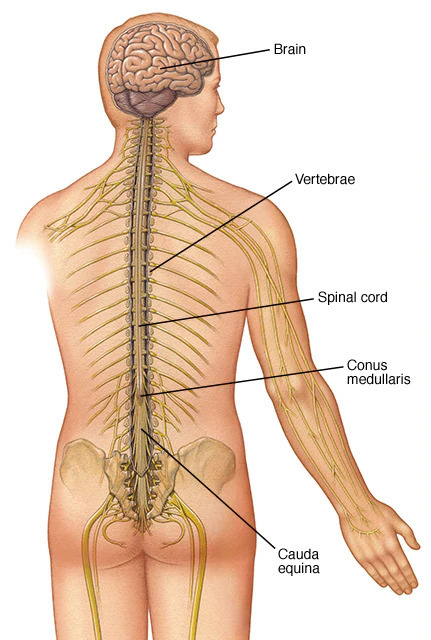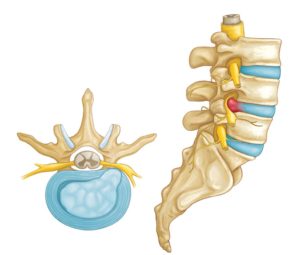Slip and Fall Accidents
Falling after a slip can cause longer lasting injuries than might first be apparent. Along with the initial bruises and soreness there might be underlying issues associated with a harsh fall. Workplace slip and fall injuries range from mild pain to severe fractures and spinal problems. These problems are more common than you might think, and the risk of injury increases with age. Falls are one of the top reasons people visit the emergency room every year and one in ten falls result in a visit to the emergency room. If you think about it there are probably a lot o times where something on the floor wasn’t cleaned up, or not cleaned up properly, and people don’t notice. Even a small amount of water is often enough to cause a slip, and if you don’t see it coming it’s easy to lose your balance. Unfortunately, unlike in Hollywood, the shockwave created by your bodyweight hitting the ground can have a dramatic impact on your spine.

Of course it’s possible to slip and fall anywhere, but falling accidents happen in certain situations more often than others. The most frequent places that falls happen are on stairs, ladders, ramps, unstable work surfaces or uneven surfaces, any place with a large amount of clutter and generally places that are wet or prone to liquid spills. Cleaning up spills on wet floors can help prevent one of the millions of emergency room visits.
Causes of Lower Back Pain after Falling
If you fell on the buttocks and have lower back pain you might be wondering what is the cause? Back pain after a fall might be due to a strain in your back, or can often be caused by a spinal cord injury. The impact of the fall causes severe lower back pain by compacting the spine’s discs in one quick motion. Squeezing a spinal disc between your bony vertebra sometimes causes the disc to burst, pushing the inner nucleus outwards and pressing on the spinal cord and nerves in the back. These sensitive nerves send pain signals to your brain alerting you that something isn’t right in the spine.
If you have lower right back pain or lower left back pain only, that’s because nerves in the back branch off to each side of the back and the disc may only be pressing on the left or right side which focuses the area of pain. This type of pain radiates downwards from the back into the legs and feet, which is called radicular pain. Many times this pain will heal slowly over time on its own, but in cases where the pain is prominent and doesn’t go away there is a need for medical intervention. It’s best to seek the advice of a medical professional when dealing with the back and spine regardless, since the issue can progress and make things worse.
Back Injury from Falling Backwards
If you fall flat on the back with an injury it might be from an injury to the ligament or muscles of the back like a sprain or a strain. An injury from a fall may cause back pain, but it’s important to discover the source of the pain, which is what an experienced back doctor specialist can do for you. Soft tissue injuries of the back sometimes cause swelling or bruising which are an indication that this is the source of back pain. Though when these don’t appear the cause can be a little more unclear. Muscles in the back can strain and spasm, which is an involuntary contraction of the muscle fibers and can be very painful. If the cause of the injury is a muscle strain or sprain the treatment usually involves rest, ice and heat packs, over the counter medication, and some home exercises.

Another form of back injury is a fractured vertebra. The compression fracture happens when the bone collapses due to the impact of the injury. People with osteoporosis, or weaker bones, are at a higher risk of suffering a vertebral compression fracture.
Spinal Cord Injury
Experiencing a spinal cord injuries is a medical emergency, and should be treated as quickly as possible to reduce long term effects. Spinal injury can cause paralysis beneath the area of the injury, commonly in the lower body and legs. Though with a partial spinal cord injury you still maintain some movement and sensation in the injured area. When the injury allows you to maintain sensation and movement it’s called an incomplete injury, which also comes in varying degrees. A complete injury is one where all motor function is lost below the injury point. If you experience extreme pain in the back, neck or head after a fall it’s important to see a doctor immediately. Other signs include weakness or paralysis in any part of the body, numbness and tingling, difficulty walking, loss of bladder, or a twisted neck or back.
Injury from Falling Backwards Treatment
If you fell on your back, or have an injury resulting from a slip and fall it’s important to undergo a physical examination by a spine specialist. Depending on the results of your diagnosis the treatment plans can look drastically different. Muscle strains and sprains require less intense treatment plans, and generally heal faster than spinal cord injuries, vertebra fractures or herniated discs. Treating muscle sprains and strains are getting rest, icing and heating your back, pain management and possibly using a back supporting device in the short term as you heal. If it’s only a mild strain you can be back to normal in a couple days, but a more serious strain can last a couple weeks.
If you have a ruptured disc or spinal cord injury the treatment plans will look a little different. If the severity of the injury is such that surgery is necessary then there are a few options depending on the specific circumstances surrounding the condition.
Spine Treatments for Herniated Discs
If the fall resulted in a herniated disc causing lower back pain, then the treatment path will involve some similarities to a strained back. Conservative treatment is generally the first approach. Using over the counter pain medication and physical therapy while monitoring the condition of the injury can resolve many cases of herniated discs. Epidural injections are a form of pain management that help with long term pain relief and inflammation reduction that assist in the recovery process. These injections are used for patients suffering from back pain wherein typical OTC medication isn’t helping, and can give months of pain relief as the disc heals.

Spine surgery is considered when none of the previous treatments are working, or the patient is experiencing numbness or severe pain. There are a few types of surgeries to relieve pressure from a herniated disc depending on where the location of the herniation is, and where it’s being pinched. Discectomy, laminectomy, and laser spine surgery are all viable options when it comes to treating a herniated disc, and your neurosurgeon should go over the process with you before you decide how you want to proceed.
Laser spine surgery is a minimally invasive procedure that doesn’t require cutting at all, so the scars usually associated with surgery aren’t present afterwards. This also means there is much less risk of complications and a faster recovery time. The way laser works is through a needle insertion directly into the herniating disc, which a laser is fed through to shrink the disc, removing pressure and pain from the surrounding nerves.
Further Back Problems after a Trip and Fall
Slip and fall injury commonly result in spinal problems, muscle strains, or herniated disc, but of course there are other injuries that are the consequence of a trip and fall. If you accidentally slipped in a puddle of spilled liquid and landed on your rear end you can suffer a tailbone injury, or broken hips and pelvis. If you land on your head there is a possibility of a concussion, which also requires immediate medical attention. Another problem that can happen is torn tendons or ligaments in the feet, knees or wrist. Though injuries from a slip and fall usually have a good prognosis, and a fair chance at returning to normal life, so with the proper medical attention recovery can be a much easier process.


